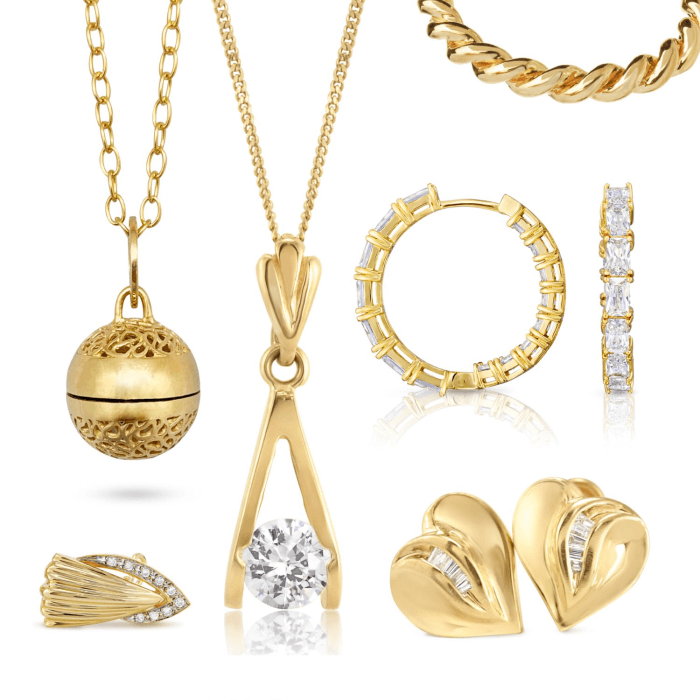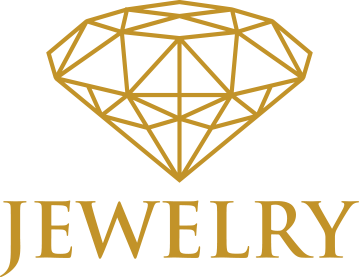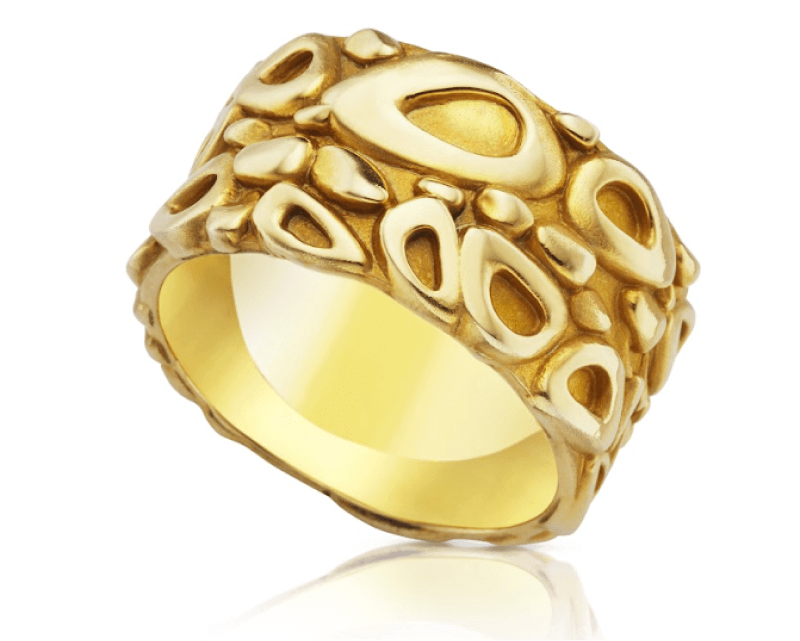Karat Ratings: What is 24-Karat Gold and How to Tell a Gold’s Karat Rating
Gold is a precious metal that has been cherished for centuries for its beauty and rarity. While there are different kinds of gold, one of the key factors in determining the value of a piece of gold jewelry is its karat.
Karat is a measure of the purity of gold. Don’t get confused between that and Carat, which refers to diamond weight. This blog post will discuss what karat means, what are the different kinds of gold karat, as well as how an item gets its karat.
What is Karat?
First, let’s discuss what karat is and why it matters when it comes to buying gold.
Gold is a soft metal, so it’s not ideal to be used in jewelry on its own. To make it harder, it is mixed with other metals, creating an alloy or a mixture of metals. The type of metals mixed with the gold—such as silver, palladium, copper, nickel, or zinc—determines the color and composition of the gold alloy.
Karat is a unit of measurement for the purity of gold in a gold alloy. In other words, karat tells you the percentage of pure gold mixed per other elements in the alloy.
Karat is measured per 24 parts. So, 24 karat means that 24 out of 24 parts of the metal is gold—it is 100 percent pure gold. Meanwhile,18 karat gold has 18 parts pure gold, and the other 6 parts is a combination of other metals.
It should be noted that while higher karat means a higher level of purity and value, it doesn’t necessarily mean that it is better. Pure gold, as mentioned, is malleable and prone to scratches, so it’s not suitable for everyday wear. In contrast, pieces with lower karat are more durable.
So let’s take a closer look at the common gold karat types in a bit more detail.
Types of Karat Gold

24-Karat Gold
What does 24 karats mean? This means that the piece is pure gold—no other metal is mixed with it. Because it is pure, it has a bright yellow color and is extremely valuable.
It is the softest and most delicate type of gold, often used in investment pieces such as special coins and gold bars. When used as jewelry, these pieces are often used only for special occasions and kept to be passed on as a family heirloom.
22-Karat Gold
22K has 22 parts or 91.7 percent gold. It is not pure but still has a high level of purity, therefore it is still quite valuable.
Due to its high level of purity, it is only slightly sturdier than 24k and has a rich yellow color. This type of gold is often used for high-end jewelry pieces.
18-Karat Gold
18-karat gold has 75 percent purity. The other 25% may be mixed with silver, copper, or zinc to create different types of gold, such as white or rose gold. Otherwise, it tends to have a light yellow color.
With a higher level of stronger metals, 18k gold pieces are more durable than 24k and 22k gold, which is why it is more commonly used for engagement rings, wedding bands, as well as other occasion pieces.
18K gold jewelry is on the affordable side but still valuable.
14-Karat Gold
14K gold is one of the lower levels of purity you’ll find. With only 58.33 percent of pure gold, jewelry made from this type of karat has a light yellow finish.
Due to its low gold content, it offers a good balance between affordability and durability. Thus, it is a popular choice for everyday jewelry.
12-Karat Gold
12K gold has 50 percent purity. This type of gold has a lower value but is certainly durable. Like 14k gold, this karat is suitable for everyday wear.
10-Karat Gold
10k gold has an even lower purity level—at 41.7 percent. This means that it contains significantly more alloy than gold.
Because it is the lowest pure gold content, it is the cheapest. However, it is durable, making it perfect for daily use.
A piece of gold jewelry’s karat rating depends on the amount of pure gold it contains, which in turn, determines its value. The higher the karat rating, the more expensive the gold becomes. So, buyers must make sure that they get the correct karat they’re paying for.
How to Tell the Karat of Gold?

Now, let’s talk about how jewelers test gold. A piece of jewelry’s karat rating is determined by the proportion of pure gold it contains compared to other metals in the alloy. This is determined through a process called assaying, which is a technique used to test the metal and work out what it is made of. Assaying involves melting the metal, separating it into its component parts, and then calculating how much of the total metal is pure gold.
For buyers, a quick way to determine the karat rating of a gold piece is by checking its markings. Most jewelers, particularly in the United States, stamp markings for each type of gold.
Markings not only indicate the gold’s karat rating, but also the composition of the piece. These stamps help buyers determine a gold piece’s true value.
Stamps may indicate the karat as it is (e.g., “24k,” “22k,” “18k,” and so on) or use the percentage purity (e.g., “999” for 24k, “916” or “917” for 22k, “750” for 18k, “585” for 14k, “417” for 10k, and so on).
In addition, some jewelry may also have markings indicating the composition of the piece, such that a silver, gold-plated piece may have “GP” and “925” stamped on it.
It is worth noting that you may not find these markings when shopping online. In some cases, they are stamped in hard-to-see areas. Otherwise, you can remove these in jewelry photography editing to make the pieces look more polished.
However, not all producers of gold stamp their jewelry. In cases like this, you may determine if the gold is real with a nitric acid test. Nitric acid reacts, in particular, to copper. So, fake gold will react to this test. Lower karat gold pieces may also have minor reactions if they are alloyed with copper.
Meanwhile, what is the 24-karat gold’s reaction to nitric acid? With close to no alloyed metal, 24k gold will have no reaction to nitric acid. Likewise, the higher the karat rating, the less reaction you will get out of the gold pieces from nitric acid.
Highlight Fine Gold with Jewelry Retouchers
Historically, fine gold has been a symbol of wealth and quality. Gold continues to be a premium choice for jewelry. The quality of the gold and the design are what differentiate an exceptional jewelry maker and seller from everyone else.
However, even the finest gold jewelry can appear dull. Make sure that your gold pieces look as rich in pictures as they do in real life with our jewelry photo retouching services.
Jewelry Retouchers understands the factors that make gold jewelry photos stunning yet realistic. Don’t let your gold pieces fall flat in photos regardless of their type of karat gold.
Reach out to us and allow us to improve your jewelry images. Send us a message today.










